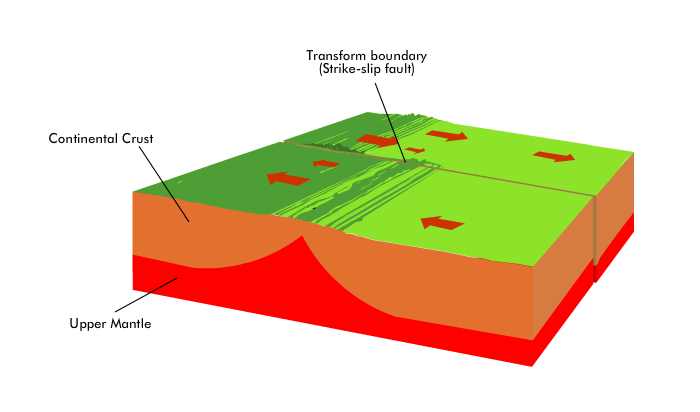
Moreover, areas around transform margins and faults have a significant resource potential (such as the hydrocarbon fields offshore Ghana or the geothermal potential of the Gulf of California) and earthquake hazard risk (such as the San Andreas or North Anatolian faults).

Thus, investigating transform margins and identifying structures that detail such plate motion changes is of great scientific interest to delineate their evolution. In a similar manner, these motion changes are expected to be found along transform systems. Changes in plate motion that occurred in the past as tectonic plates moved are imprinted and documented on the planet’s divergent and convergent plate margins. What Drives Plate Motion, and How Fast Do Plates M.Transform margins and transform faults are first order tectonic features that accommodate or have accommodated motion between tectonic plates in our planet.How Can You Tell One Mineral From Another?.Plates on opposite sides of the inactive part of a fracture zone move together, as one plate. Further, in Wilson’s model, slip occurs only along the segment of the fracture zone between the two ridge segments (figure above c).

Clearly, the movement direction on the active portion of the fracture zone must be opposite to the movement direction that researchers originally thought occurred on the structure. With this idea in mind, he drew a sketch map showing two ridge-axis segments linked by a fracture zone, and he drew arrows to indicate the direction that ocean floor was moving, relative to the ridge axis, as a result of sea-floor-spreading (figure above b). These segments were linked (not offset) by fracture zones. Wilson proposed that fracture zones formed at the same time as the ridge axis itself, and thus the ridge consisted of separate segments to start with. Tuzo Wilson, began to think about fracture zones in the context of the sea-floor-spreading concept. The distribution of movement along fracture zones remained a mystery until a Canadian researcher, J. The portions of fracture zones that extend beyond the edges of ridge segments, out into the abyssal plain, are not seismically active.

Earthquakes, and therefore active fault slip, occur only on the segment of a fracture zone that lies between two ridge segments. But when information about the distribution of earthquakes along mid-ocean ridges became available, it was clear that this model could not be correct. In other words, they imagined that a mid-ocean ridge initiated as a continuous, fence-like line that only later was broken up by faulting. Originally, researchers incorrectly assumed that the entire length of each fracture zone was a fault, and that slip on a fracture zone had displaced segments of the mid-ocean ridge sideways, relative to each other. These belts, or fracture zones, lie roughly at right angles to the ridge segments, intersect the ends of the segments, and extend beyond the ends of the segments.

When researchers began to explore the bathymetry of midocean ridges in detail, they discovered that mid-ocean ridges are not long, uninterrupted lines, but rather consist of short segments that appear to be offset laterally from each other (figure above a) by narrow belts of broken and irregular sea floor.


 0 kommentar(er)
0 kommentar(er)
